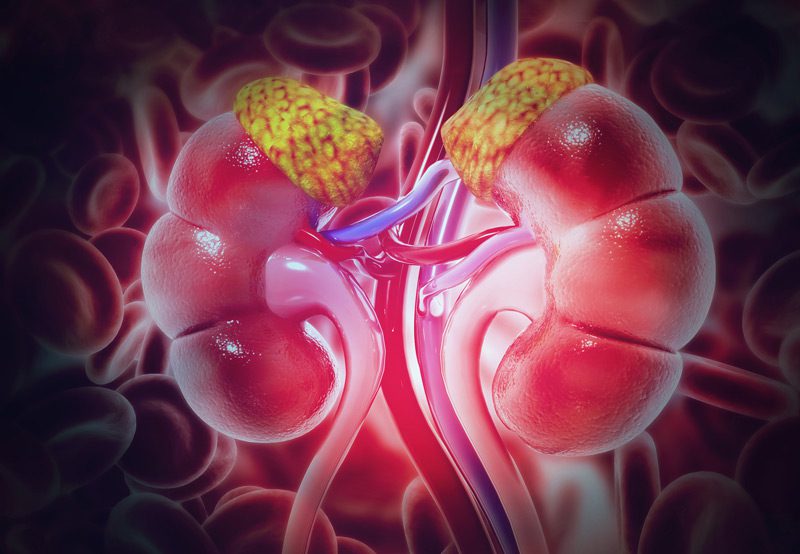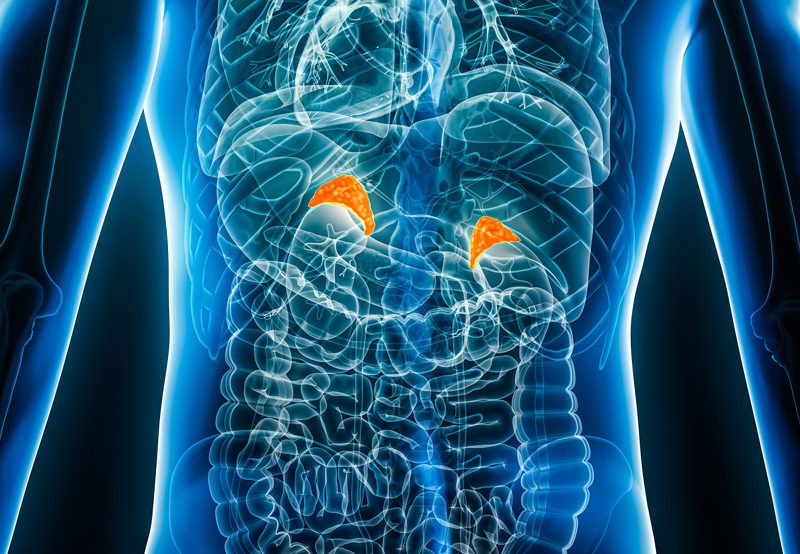

Radical adrenalectomy is a surgical procedure in which the entire adrenal gland is removed, typically to treat large, potentially malignant, or hormonally active adrenal tumors. This approach is often necessary when there is concern for cancer or when partial removal would leave behind disease.
Conditions Treated with Radical Adrenalectomy
- Adrenocortical Carcinoma: A rare but aggressive cancer of the adrenal cortex that often requires complete gland removal
- Large or Suspicious Adrenal Masses: Especially those with imaging features concerning for malignancy
- Pheochromocytoma: When tumors are large, invasive, or located in one adrenal gland
- Hormone-Producing Tumors: Including cortisol-producing (Cushing’s syndrome), aldosterone-producing (Conn’s syndrome), and androgen-producing tumors when partial removal is not appropriate
- Metastatic Disease: In cases where cancer from another site has spread to the adrenal gland

Symptoms That May Indicate the Need for Surgery
- Persistent high blood pressure despite medication
- Rapid weight gain or round facial appearance (Cushingoid features)
- Low potassium levels, fatigue, and muscle weakness
- Flushing, sweating, tremors, and palpitations (suggestive of pheochromocytoma)
- Abdominal mass or discomfort
- Abnormal imaging findings suggestive of malignancy
Diagnosis
Before proceeding with surgery, a full diagnostic workup is performed to assess the function and appearance of the adrenal mass:
- Hormonal Evaluation: Blood and urine tests to assess adrenal hormone production
- CT or MRI Scans: Imaging to evaluate tumor size, borders, and possible invasion into surrounding structures
- PET or MIBG Scans: To further characterize suspicious lesions or identify metastatic spread
- Biopsy: Rarely used due to the risk of tumor spread and bleeding; usually avoided in suspected pheochromocytoma
The Procedure
Radical adrenalectomy may be performed using a minimally invasive (laparoscopic or robotic) technique or through open surgery, depending on the tumor size, location, and complexity.
- Under general anesthesia, the adrenal gland is fully removed along with surrounding fatty tissue
- In cases of suspected cancer, lymph nodes or adjacent tissue may also be taken to ensure clear margins
- The approach (posterior, transabdominal, or thoracoabdominal) is selected based on tumor characteristics and surgeon expertise
- Blood pressure and hormone levels are closely monitored during surgery, especially in hormonally active tumors
Recovery and Outcomes
Hospital stay typically ranges from 1 to 3 days for minimally invasive surgery and may be longer for open procedures. Recovery times vary but generally include:
- Gradual return to regular activity over 2–4 weeks
- Regular follow-up to assess hormone levels and monitor for recurrence or metastasis
- In cases where both adrenal glands are removed or the remaining gland is insufficient, lifelong hormone replacement therapy may be required
Radical adrenalectomy offers the best chance of cure or disease control in cases of adrenal cancer, large or invasive tumors, and hormonally active masses not suitable for partial surgery. When performed by experienced surgeons, the procedure is generally safe with a low risk of complications.
Next Steps
If you’ve been diagnosed with an adrenal mass or are experiencing symptoms of hormone overproduction, a thorough evaluation can help determine whether radical adrenalectomy is the appropriate treatment. Speak with your urologist or endocrine specialist to explore your options and plan a surgical approach tailored to your condition.
